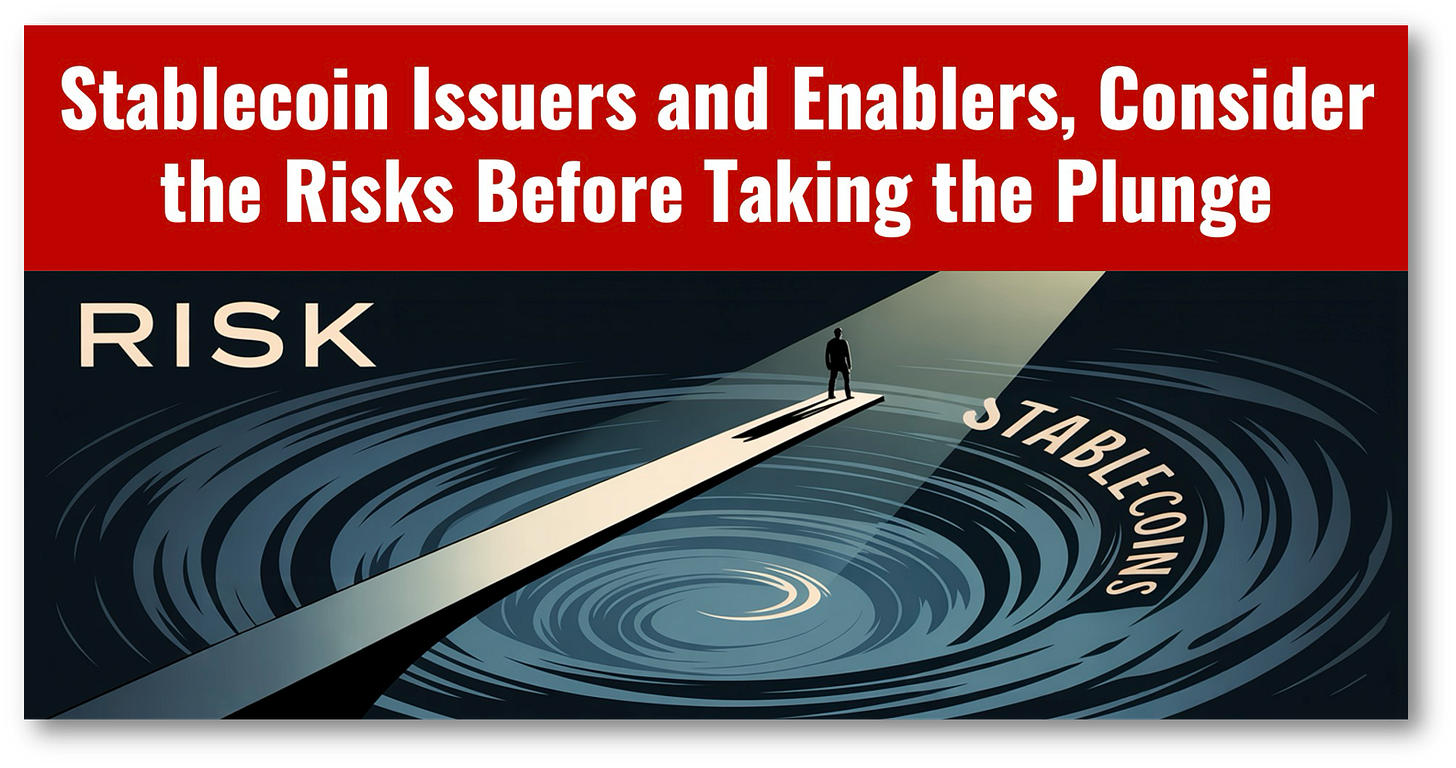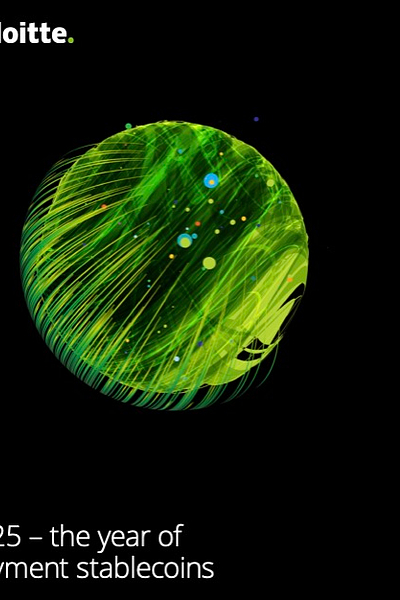Stablecoin Issuers and Enablers, Consider the Risks Before Taking the Plunge
Early movers may be rewarded or penalized.
This is my daily post. I write daily but send my newsletter to your email only on Sundays. Go HERE to see my past newsletters.
The stablecoin (SC) frenzy is on, and hopes are high that they can disrupt everything from remittances to the ongoing trend of de-dollarization.
The question facing financial institutions and companies is how they will participate in the SC marketplace, with the two main roles being issuer or enabler.
The problem is that without proper due diligence, there is no “safe” place to play in the stablecoin market, which is now regulated and is no longer the realm of get-rich-quick schemes.
On the issuance side, we have the actual SC issuers and distributors who can be anyone from a bank to big tech. There is no limit as to who can issue them, and everyone is waiting for big tech to drop a proverbial bomb on the marketplace with the launch of a coin.
Most financial institutions, except for the largest like JPMorgan, Citi, Bank of America, or Societe Generale, will demur from becoming issuers but will happily take SC cash as either a transaction or reserve bank.
Walmart and other household names may also decide to take the plunge, as taking payments back from Visa and Mastercard will provide a major incentive.
Many companies will opt to “play it safe” and enable the new stablecoin ecosystem by building the SC wallet or providing custodial, technology, compliance, or advisory services, which are removed from the spotlight of issuance.
“Paying it safe,” however, won’t work because if companies research the risks before taking the plunge, they will find that there are just as many risks for enablers as there are for issuers.
This isn’t to say that early entrants won’t move aggressively for market share, throwing caution to the wind.
They will, but will they be long-lived in the market?
Deloitte’s report (below) gives a full impact and response framework for each of the risk and control measures below.
As I’ve said before with stablecoins, “the devil is in the details,” and risks have a way of exploding unexpectedly.
👉RIsk and Control Measures
🔹 Cybersecurity and data protection:
Issuers must safeguard digital infrastructure against cyberattacks, which could lead to theft of PSCs and loss of private keys, resulting in financial losses, legal liabilities, and erosion of user trust.
🔹 Anti-money laundering (AML):
Issuers must comply with stringent AML, know-your-customer (KYC), and state laws.
🔹 Blockchain and smart contract risk:
Reliance on blockchain technology and smart contracts introduces risks such as vulnerabilities, bugs, forks, congestion, and technical problems.
🔹 Depegging of stablecoin:
Issuers should maintain accurate minting and burning activities, effective reserve management, and issue transparency reports to maintain trust and confidence.
🔹 Tax considerations:
Stablecoins may not be considered money or currency for US income tax purposes and may be treated as general property or debt obligations.
🔹 Accounting considerations:
Holders of stablecoins must assess whether they represent financial or intangible assets, impacting classification, measurement, and accounting.
🔹 Operational and market risks:
Issuers face operational risks, such as human error, fraud, and internal misconduct, and market risks like fluctuations in reserve asset values.
🔹 Regulatory noncompliance:
Issuers should engage with regulators, participate in industry forums, and seek legal and compliance guidance.
HAND-CURATED FOR YOU
🚀 Every week I scan thousands of articles to find only the best and most valuable for you. Subscribe to get my expertly curated news straight to your inbox each week. Free is good but paid is better.




